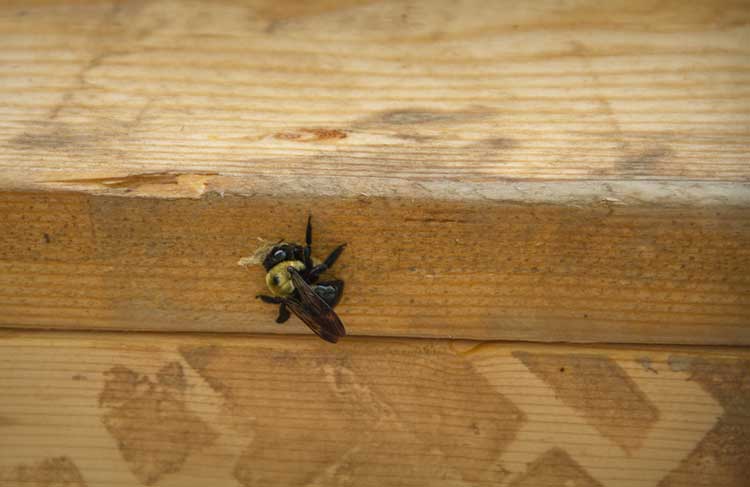How to Get Rid of Carpenter Bees
Last updated November 2024

These jumbo bees look scary, but they are valuable pollinators and pose no threat to humans. Sometimes confused with bumblebees, they’re about an inch long, with hairy thoraxes and legs but hairless abdomens. Males can’t sting; the females can sting but won’t. Females can be seen entering or emerging from large entrance holes in wood. You know you have carpenter bees when you see them or telltale sawdust where they have been drilling into wood. A single bee won’t cause much harm, but the broods that follow will expand the tunnel and may cause structural damage.
How to Stop Them
Cover exposed wood with paint or varnish, or metal or fiberglass materials. To kill the bees, carefully apply an insecticidal spray or dust designed for flying insects, complying with the safety precautions on the label. Alternatively, close off the nest or replace the damaged wood. Apply a temporary repellent such as almond oil or almond essence around the nest.
Hiring Help
Most pros will simply spray nesting sites with insecticide and call it a day. You can do that.


